www.derby-signalling.org.uk
North Staffordshire Sojourn
Though the date continues to shift (Autumn 2017 is what I heard this afternoon during a very enjoyable conversation with one of the gentlemen signallers!), everyone seems to agree that the remaining mechanical boxes of the North Staffordshire line are on borrowed time. That being so, a sunny Saturday in August seemed the perfect time to revisit old haunts and record some "Now" views before it is too late.
All images on this page were taken by Dave Harris and in the event you like any of them, a full-size version will result from clicking on a picture. The images are provided to you on the basis of the Creative Commons Attribution-NonCommercial 4.0 International Licence.
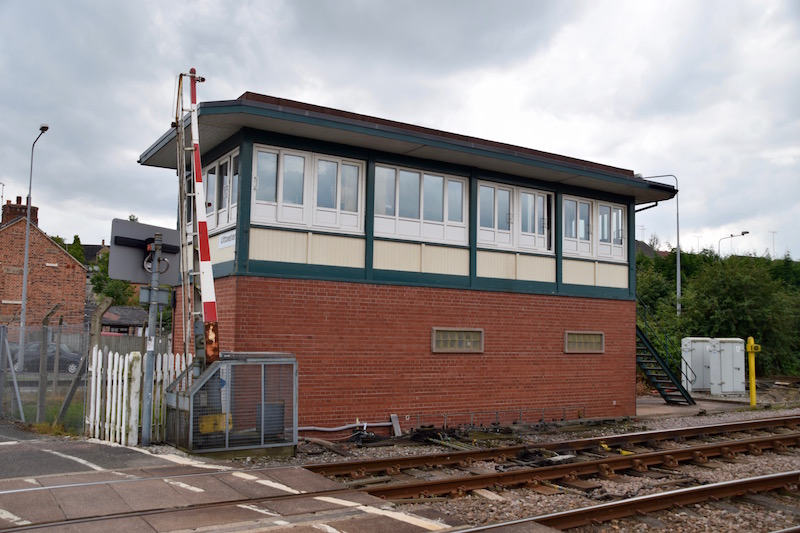 Uttoxeter. The last mechanical signal box opened opened on the London Midland Region. The last one altogether apparently being Porth in South Wales, just a couple of months later. The timber structure of this "BR(LMR) Type 15" box was secondhand from Carlton Road Junction on the approach to St Pancras — or at least bits of it were!. It replaced the c.1872 NSR Pinfold Crossing box, which was abolished along with its neighbour at Hockley Crossing on 09JAN1981.This box was fully commissioned on 28JAN1981.
Uttoxeter. The last mechanical signal box opened opened on the London Midland Region. The last one altogether apparently being Porth in South Wales, just a couple of months later. The timber structure of this "BR(LMR) Type 15" box was secondhand from Carlton Road Junction on the approach to St Pancras — or at least bits of it were!. It replaced the c.1872 NSR Pinfold Crossing box, which was abolished along with its neighbour at Hockley Crossing on 09JAN1981.This box was fully commissioned on 28JAN1981.
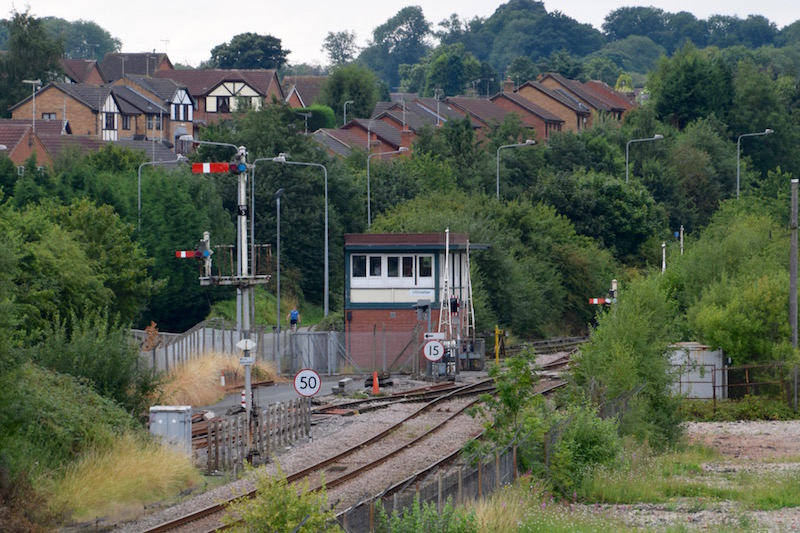 Uttoxeter. Taken from the town bypass bridge, this view mimics that appearing in a recently published book-a-zine currently available on the shelves of Mr. Smith's Reading Room. (And now you know where I acquired the above snippet of knowledge about Porth!) The caption in the aforementioned publication asserts that Uttoxeter's sidings are "long gone" which I felt was a little unfair. The connection on the down side may now only be used for temporary stabling of on-track plant, but as far as I know is still usable? Not sure that the Down Goods Loop gets much use these days, but I'd be delighted to be put right on that point by anyone who knows about these things.
Uttoxeter. Taken from the town bypass bridge, this view mimics that appearing in a recently published book-a-zine currently available on the shelves of Mr. Smith's Reading Room. (And now you know where I acquired the above snippet of knowledge about Porth!) The caption in the aforementioned publication asserts that Uttoxeter's sidings are "long gone" which I felt was a little unfair. The connection on the down side may now only be used for temporary stabling of on-track plant, but as far as I know is still usable? Not sure that the Down Goods Loop gets much use these days, but I'd be delighted to be put right on that point by anyone who knows about these things.
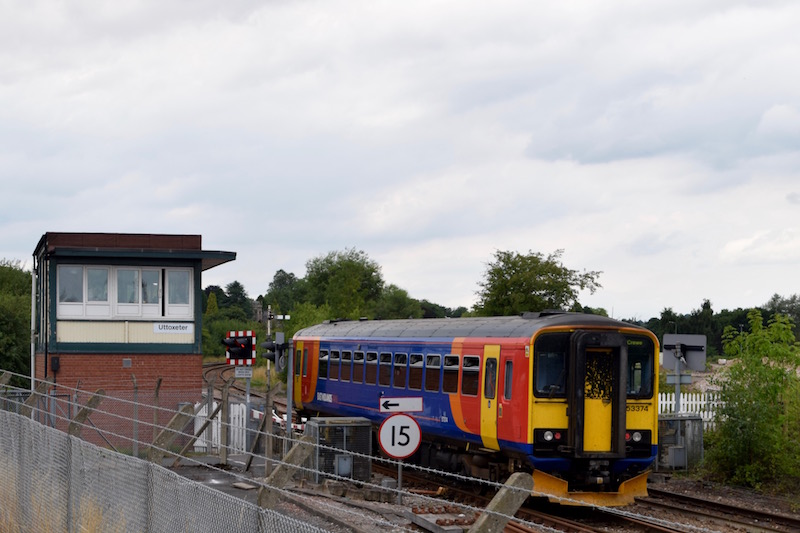 Uttoxeter. The 13:42 off Derby for Crewe passing over the level crossing which has been pedestrianised since the Uttoxeter bypass severed Pinfold Street just behind the box. The land to the north of the railway which was for many years the site of Bamford’s digger factory remains empty for now. Compare & contrast with this aerial view from 1949. While you're enjoying that thought, please cast an eye on this appeal for information pertaining to the approximate location you're looking at.
Uttoxeter. The 13:42 off Derby for Crewe passing over the level crossing which has been pedestrianised since the Uttoxeter bypass severed Pinfold Street just behind the box. The land to the north of the railway which was for many years the site of Bamford’s digger factory remains empty for now. Compare & contrast with this aerial view from 1949. While you're enjoying that thought, please cast an eye on this appeal for information pertaining to the approximate location you're looking at.
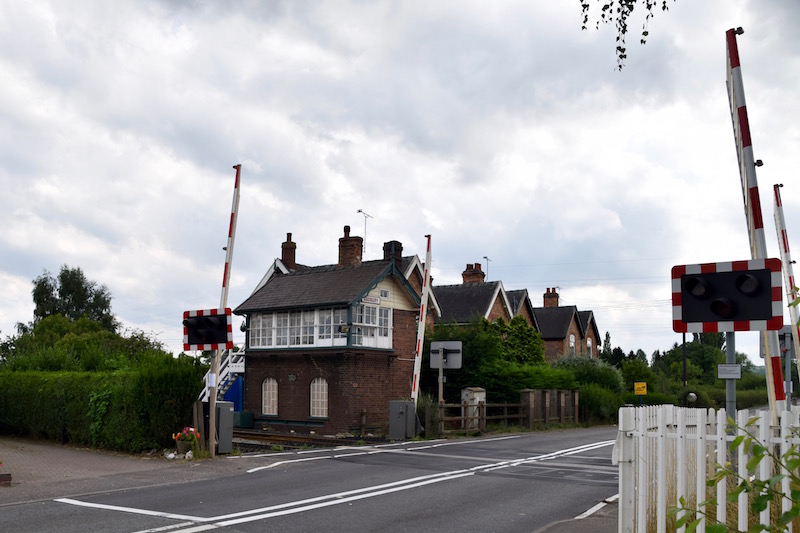 Sudbury. A North Staffordshire Railway "Type 1" by the Signalling Study Group's classification system, dating from 1885. However, as the caption for Roger Newman's photograph of Sudbury in that august institution's opus hints, I suggest that the influence of Messrs. McKenzine & Holland of Worcester was likely far greater than any draughtsman of the North Staffordshire Railway in its design.
There is a small cast "NSR" logo adorning the front of the box these days, a welcome sign of pride in the heritage of the railway shown by the resident signallers in recent years. Now, if it could just be arranged for the gates and NSR turnstile wickets to be put back, along with the Up Home bracketed off the station building, and maybe while you're at it, rebuild Sudbury Yard box....? Oh well, I'm grateful for what we have.
Sudbury. A North Staffordshire Railway "Type 1" by the Signalling Study Group's classification system, dating from 1885. However, as the caption for Roger Newman's photograph of Sudbury in that august institution's opus hints, I suggest that the influence of Messrs. McKenzine & Holland of Worcester was likely far greater than any draughtsman of the North Staffordshire Railway in its design.
There is a small cast "NSR" logo adorning the front of the box these days, a welcome sign of pride in the heritage of the railway shown by the resident signallers in recent years. Now, if it could just be arranged for the gates and NSR turnstile wickets to be put back, along with the Up Home bracketed off the station building, and maybe while you're at it, rebuild Sudbury Yard box....? Oh well, I'm grateful for what we have.
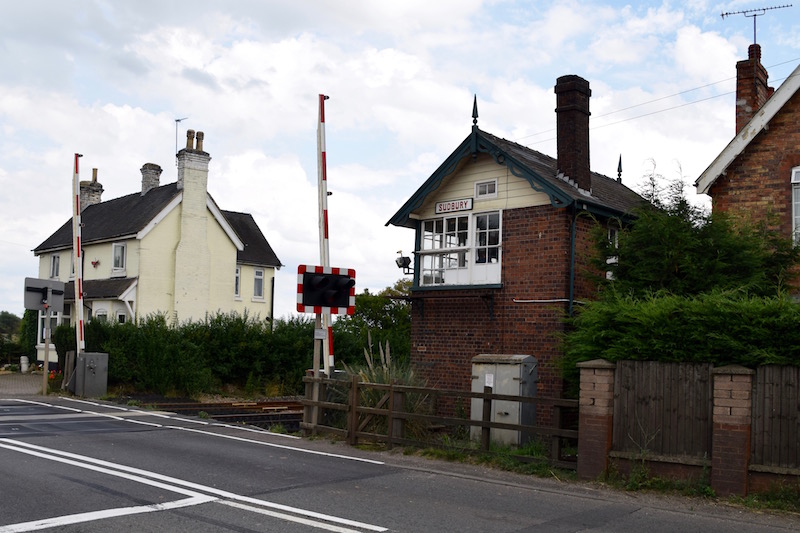 Sudbury. I suppose that one benefit of barriers instead of gates is that the huge mirror which once protruded from the front corner of the box to afford a view of traffic from the Lichfield direction is no longer needed.
Sudbury. I suppose that one benefit of barriers instead of gates is that the huge mirror which once protruded from the front corner of the box to afford a view of traffic from the Lichfield direction is no longer needed.
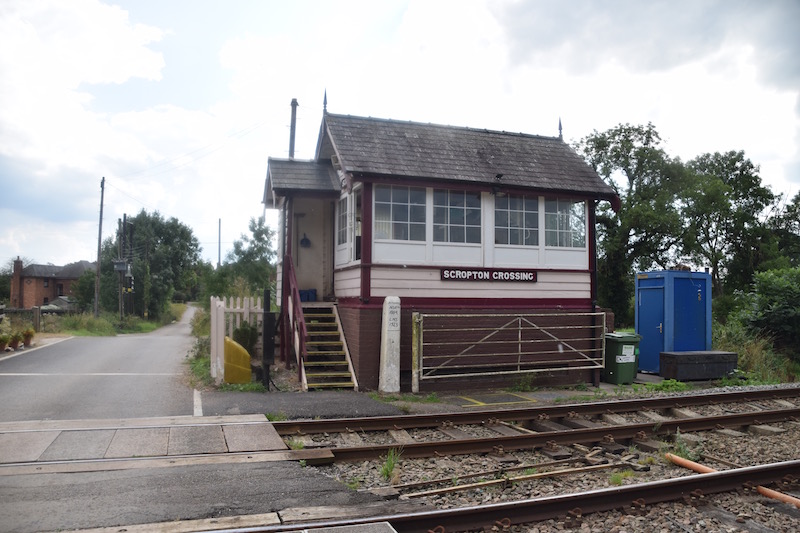 Scropton. This is a North Staffordshire Railway "Type 2" box opened in 1889. Whereas its neighbour Sudbury lost its semaphores in 1990 during an aborted project to abolish the box and replace it with cctv supervised barriers, Scropton retains its full set of Distant, Home and Starting (sorry, "Section", if we're using modern parlance!) signals. Absolute Block perfection in 2015!
Scropton. This is a North Staffordshire Railway "Type 2" box opened in 1889. Whereas its neighbour Sudbury lost its semaphores in 1990 during an aborted project to abolish the box and replace it with cctv supervised barriers, Scropton retains its full set of Distant, Home and Starting (sorry, "Section", if we're using modern parlance!) signals. Absolute Block perfection in 2015!
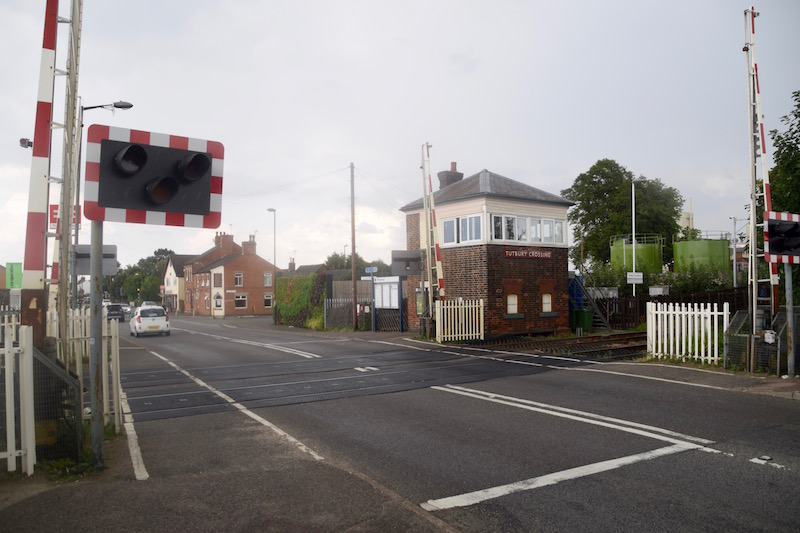 Tutbury Crossing. A McKenzie & Holland "Type 1" box dating from, well... when? Some sources cite 1872 while others (whom I know have done their research!) say "before 1870". The point is, no-one to my knowledge has found a minute or other contemporary reference. The aforementioned book-a-zine states that Ty-Croes on the Hollyhead line is "one of the oldest in the UK" dating from 1872, then confusingly tells us on the very next page that the box at Llanfair PG dates from 1871. I've always been a bit cavalier this way, but I will continue to stick my neck out and say that Tutbury Gates is the oldest surviving signalbox in the world - even if I can't actually prove it!
Tutbury Crossing. A McKenzie & Holland "Type 1" box dating from, well... when? Some sources cite 1872 while others (whom I know have done their research!) say "before 1870". The point is, no-one to my knowledge has found a minute or other contemporary reference. The aforementioned book-a-zine states that Ty-Croes on the Hollyhead line is "one of the oldest in the UK" dating from 1872, then confusingly tells us on the very next page that the box at Llanfair PG dates from 1871. I've always been a bit cavalier this way, but I will continue to stick my neck out and say that Tutbury Gates is the oldest surviving signalbox in the world - even if I can't actually prove it!
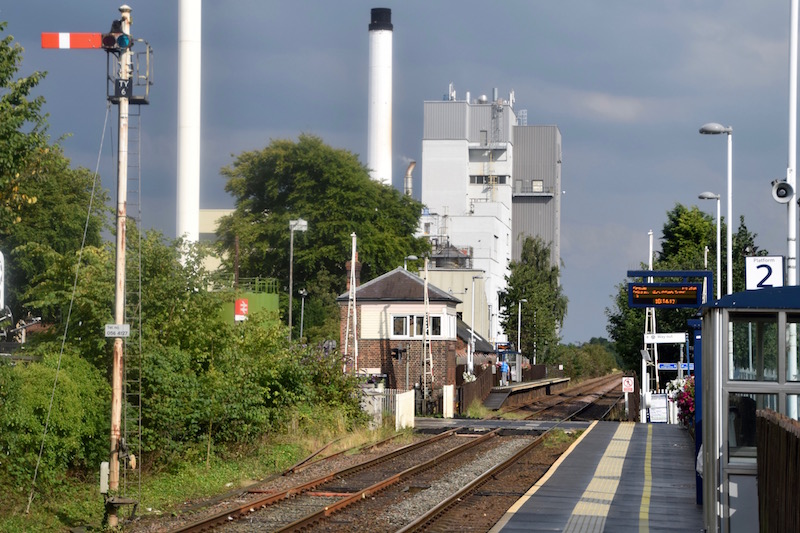 Tutbury Crossing. What a difference 32 years makes. A fresh-faced Mr. Allsop stood on the footbridge west of Tutbury Yard in May 1983 and took a fabulous photo, of which this sort of approximates. (Actually, it isn't even close, but what I can tell you is if you want to know exactly how fresh-faced Mr. Allsop was at that time, those of you who know him, ask to see his Priv. Pass ID!)
Tutbury Crossing. What a difference 32 years makes. A fresh-faced Mr. Allsop stood on the footbridge west of Tutbury Yard in May 1983 and took a fabulous photo, of which this sort of approximates. (Actually, it isn't even close, but what I can tell you is if you want to know exactly how fresh-faced Mr. Allsop was at that time, those of you who know him, ask to see his Priv. Pass ID!)
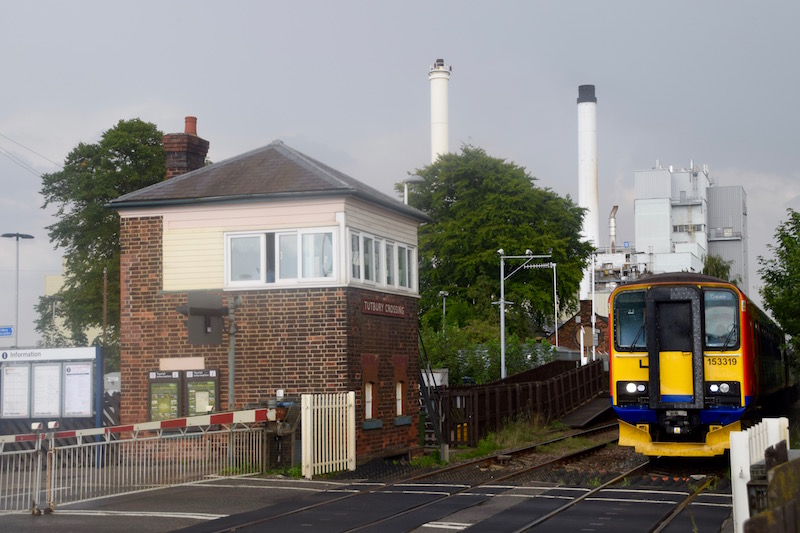 Tutbury Crossing. Storm Clouds Gather. Oh, and yes, the next "Down Man" arrives.
Tutbury Crossing. Storm Clouds Gather. Oh, and yes, the next "Down Man" arrives.
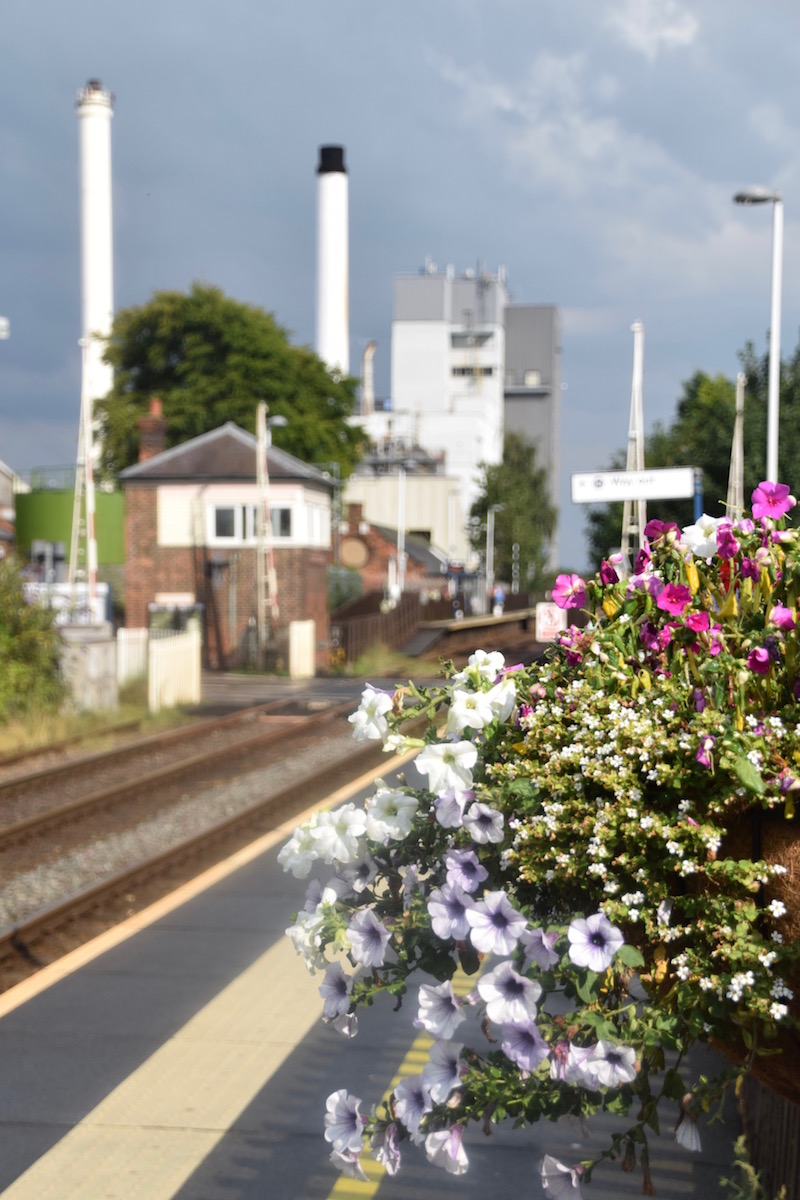 Tutbury Crossing. Gratuitous arty shot.
Tutbury Crossing. Gratuitous arty shot.
Commissions accepted. Reasonable rates.
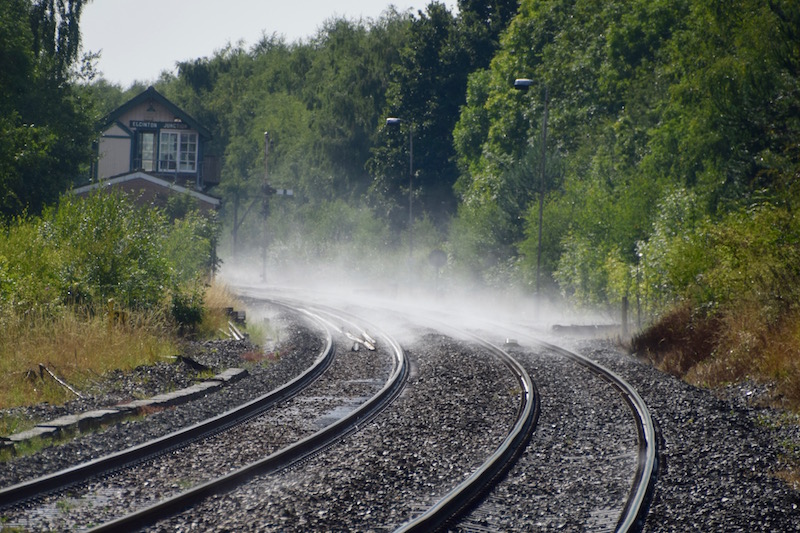 Egginton Junction. Title this one "After The Storm".
[Pedantic Point to Whom It May Concern (and there are many) there are ONLY TWO Gs in Egginton!]
I wasn't going to bother stopping at Egginton as I have no way of gaining closer access, but on seeing this sight as I went over Hilton Crossing I couldn't resist. By the time I turned around the evaporation cloud had diminished somewhat, unfortunately.
The box is another North Staffordshire Railway "Type 1", this one with fairly firm dating evidence from January 1878. Famously once the double junction with the Great Northern Railway "Derbyshire Extension Railways", the former 47 lever frame was cut down to just 14 in 1972.
Egginton Junction. Title this one "After The Storm".
[Pedantic Point to Whom It May Concern (and there are many) there are ONLY TWO Gs in Egginton!]
I wasn't going to bother stopping at Egginton as I have no way of gaining closer access, but on seeing this sight as I went over Hilton Crossing I couldn't resist. By the time I turned around the evaporation cloud had diminished somewhat, unfortunately.
The box is another North Staffordshire Railway "Type 1", this one with fairly firm dating evidence from January 1878. Famously once the double junction with the Great Northern Railway "Derbyshire Extension Railways", the former 47 lever frame was cut down to just 14 in 1972.
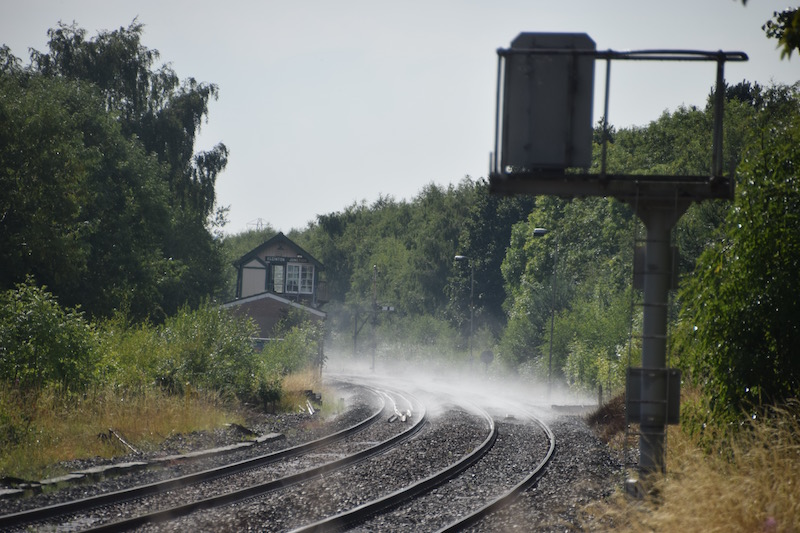 Egginton Junction. While we are in a "compare & contrast" mood, have a look at this 1964 view, for which I am indebted to Roger Newman for sharing.
Egginton Junction. While we are in a "compare & contrast" mood, have a look at this 1964 view, for which I am indebted to Roger Newman for sharing.
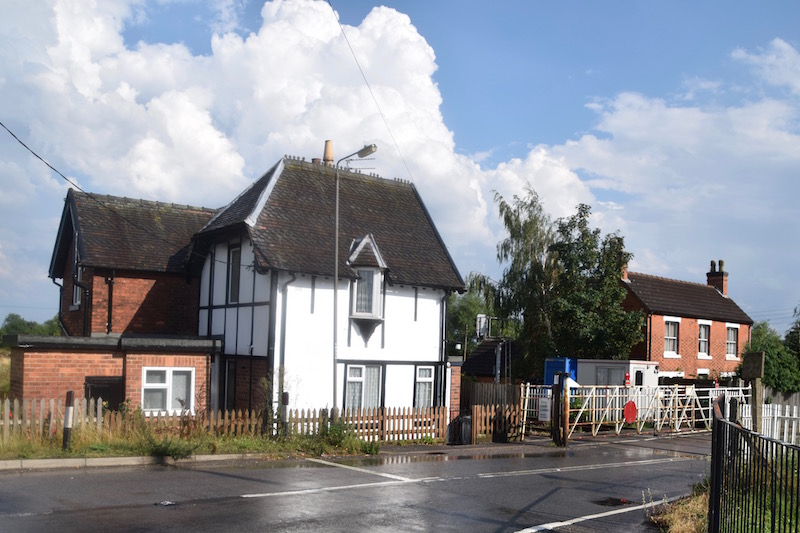 Hilton Crossing. More in the name of completeness than any strong desire to record the signalling structure here - though the portacabin undoubtedly qualifies as such. As comparatively recently as 1977, the crossing keeper's hut and release lever were on the west side of the road. At this time, the crossing remained under the control of a residential crossing keeper, at least for part of the day. This necessitated the employee concerned having to cross the road in order to close the gates to road traffic. Three years after the passing of the Health & Safety at Work Act, it was agreed that this was A Very Bad Thing. The gates were re-hung on the east side of the road, the release lever moved and a new hut provided for those crossing keepers who filled-in for the resident. Oh, and very soon after the incumbent post-holder retired, the house was sold and the very notion of Residential Crossing Keepers pretty soon banished to history! This is all documented at the National Archives in MT114/1316.
Hilton Crossing. More in the name of completeness than any strong desire to record the signalling structure here - though the portacabin undoubtedly qualifies as such. As comparatively recently as 1977, the crossing keeper's hut and release lever were on the west side of the road. At this time, the crossing remained under the control of a residential crossing keeper, at least for part of the day. This necessitated the employee concerned having to cross the road in order to close the gates to road traffic. Three years after the passing of the Health & Safety at Work Act, it was agreed that this was A Very Bad Thing. The gates were re-hung on the east side of the road, the release lever moved and a new hut provided for those crossing keepers who filled-in for the resident. Oh, and very soon after the incumbent post-holder retired, the house was sold and the very notion of Residential Crossing Keepers pretty soon banished to history! This is all documented at the National Archives in MT114/1316.
I hope you have enjoyed sharing my afternoon’s perambulation with me. I shall endeavour not to leave it so long before sharing more content on the site next time.
Back to the main page
Dave Harris, Willington, Derby, UK.
Email: dave@derby-signalling.org.uk
Page last updated: 22AUG2015











